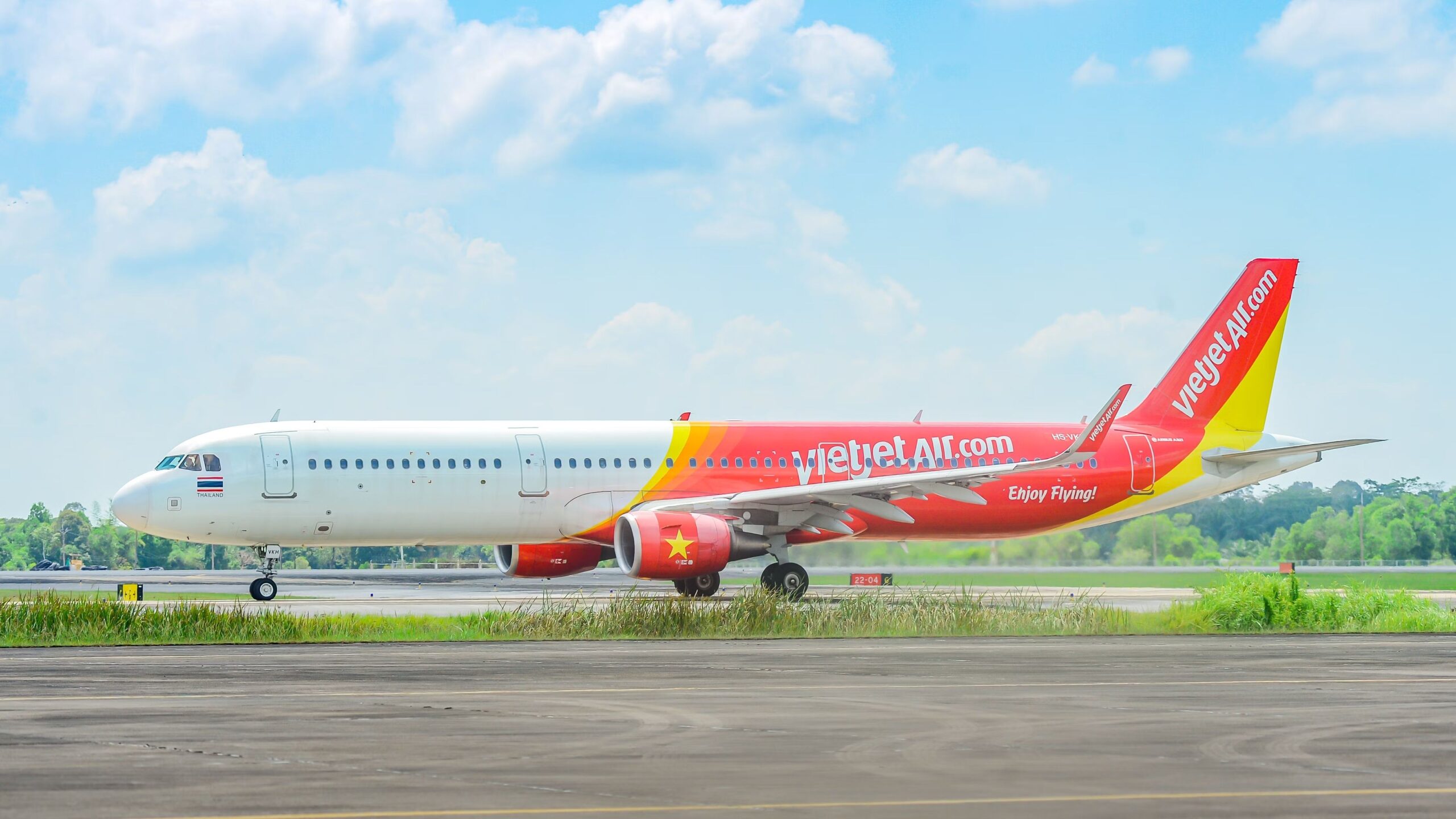Summary
- Vietjet plans to establish maintenance, repair and overhaul facility in Laos, creating up to 2,500 new jobs in the aviation sector.
- Vietjet Thailand operated its first flight with sustainable aviation fuel, aiming to reduce CO2 emissions by 153,000 tons by 2030.
- The airline aims to use 1% SAF by 2026 and 5% by 2030, aligning with Thailand’s goal of net-zero carbon emissions by 2050.
Last week, the Vietjet Group was active on two fronts: with Vietjet announcing plans for a new maintenance, repair and overhaul facility in Laos and Vietjet Thailand operating its first flight with sustainable aviation fuel between Bangkok and Da Nang in Vietnam.
Supporting aviation in Laos
On July 11, Vietjet announced plans to establish the airline’s maintenance, repair and overhaul (MRO) facility in Laos and to work with the Laos Department of Civil Aviation (DCAL) to expand air transport activities and world-class training for the new workforce. The announcement took place in Vientiane in the presence of Vietnamese President To Lam, Laos President Thongloun Sisoulith, and other high-ranking dignitaries.
Photo: Suparat Chairatprasert | Shutterstock
Vietjet signed a Memorandum of Understanding (MoU) with the Laos Ministry of Public Works and Transport to implement multiple aviation-related projects expected to create up to 2,500 jobs in the country’s aviation sector. The Vietjet Aviation Academy will oversee the training of the new workforce in line with international standards for the new facility.
As the airline’s partner, the DCAL will provide administrative, legal, and facility support and coordinate with other agencies to bring the projects to life. The agreement aligns with the goals and directions set by the governments of Vietnam and Laos in their MoU on Strategic Cooperation in Transport from 2016 through 2025.

Related
Vietjet Launches Airbus A321 Flights To Vientiane
Vietjet has opened a new nonstop route between Ho Chi Minh City and Vientiane in Laos to reduce transit times significantly.
Last year, Vietjet launched a state-of-the-art regional maintenance center in cooperation with Lao Airlines, and earlier this year, it started flying between Vietnam and Laos, connecting Ho Chi Minh City to Vientiane. Vietjet aims to help Laos grow its aviation sector to attract more international tourists, foster economic and social development and enhance trade with its regional neighbors.
Vietjet Thailand first SAF flight
Also last week, Vietjet Thailand operated its first flight using sustainable aviation fuel, which it followed up with one of its special promotional offers, the FlyGreen Sale. Sustainable aviation fuel (SAF) was used on a Vietjet Thailand flight on July 10 from Bangkok Suvarnabhumi Airport (BKK) to Da Nang International (DAD) in Vietnam.
Thailand’s Pattaya Mail reported that Neste, the world leader in SAF production, produced the SAF in Finland, and it was imported through collaboration with PTT International Trading and Malaysia’s PETCO Trading Labuan Company. PTT Oil and Retail Business (OR) and Vietjet Thailand launched the flight using an Airbus A320 on a route the airline operates three times daily using A320/A321 aircraft.

Related
Neste Opens Refinery And Builds SAF Supply Chain To Singapore Changi Airport
Neste’s Singapore refinery now has the capacity to produce one million tons of sustainable aviation fuel annually and get it delivered to airlines
Neste produced the SAF from used cooking oil, and because it has similar properties to conventional jet fuel, it can be blended and used without engine modifications. Vietjet Thailand Chief Executive Officer Woranate Laprabang said the flight “marks a significant milestone in the airline’s sustainability mission.”
The low-cost carrier is aiming to use 1% SAF by 2026 and 5% by 2030, potentially reducing CO2 emissions by 153,000 tons between 2025 and 2030. This is in step with Thailand’s goal of net-zero carbon emissions by 2050 and aligns with the International Civil Aviation Organization (ICAO) process to ensure a sustainable future for the aviation industry.



